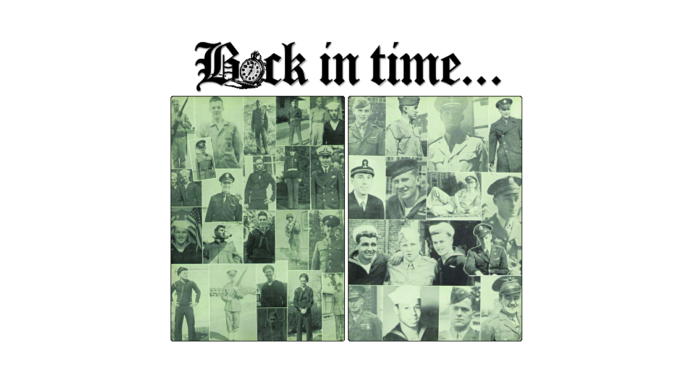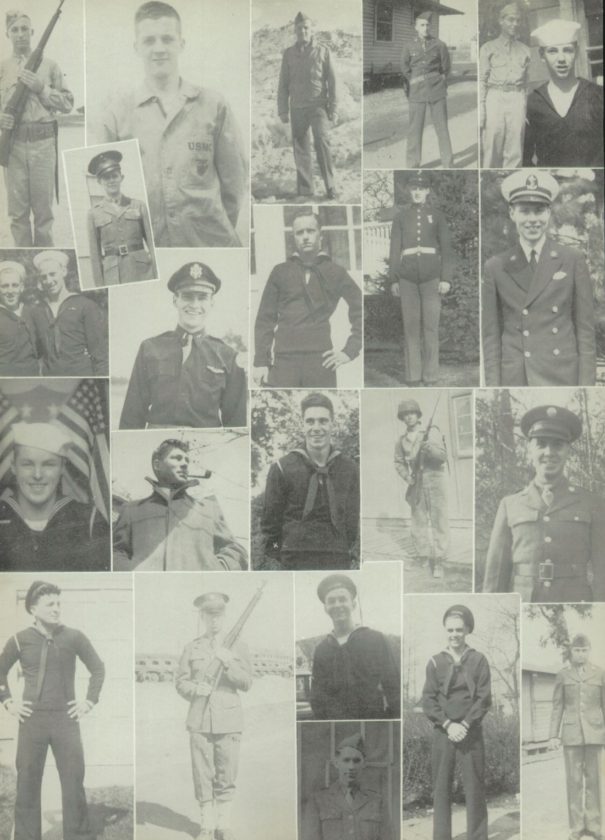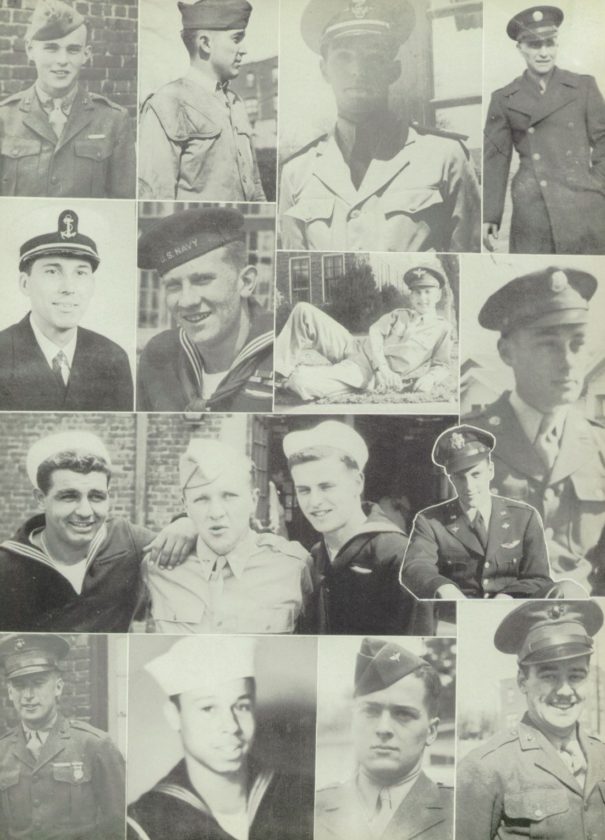

ENGLEWOOD, N.J.—The year was 1943. America was embroiled in the Second World War, and on the homefront patriotism was running high. Everyone wanted to do their part.
While the majority of U.S. servicemen during World War II were draftees, millions also volunteered—some even before they completed high school.
In 1943 the Dwight Morrow High School yearbook was dedicated to the young men—both alumni and students who had reached enlistment age and joined up—who were in the service. Photo collages showed the boys, spanning all branches of the armed services, looking handsome and proud in their uniforms.

On the cusp of manhood, these young men left their families, their friends, to be shipped to overseas battlefields and unknown fates in service to their country. As the saying goes, “Freedom isn’t free.” No doubt, some of the men shown in these images never made it home. Without names attached to their photos, we have no way of knowing their outcomes.
So many teenagers around the United States enlisted in the military prior to graduating that in 1942 the General Education Development (GED) Test was developed. The test was intended to provide young military men with the educational credentials they would need to procure a job upon their return to civilian life.
Back on the homefront, students at Dwight Morrow were active in the war effort. Kids sold war stamps and bonds, put together Comfort Kits for soldiers and veterans, held scrap metal drives, and collected old silk stockings (these were recycled into powder bags for the Navy, or into parachutes). The students in music clubs played monthly at City Hall during the sendoff services for Englewood servicemen.
The Third Chapter Hi-Y club, whose mission was to “create, maintain, and extend, throughout the school and community, high standards of Christian character,” offered its services to the Office of Civilian Defense in Englewood.
“The members enrolled in the courier-messenger courses held during October. They are now serving as air-raid messengers in our local defense setup,” the club reported. “A service flag was presented to the school in March to remind the students of the sacrifices some of their classmates are now making to win the war.”
Students also volunteered to help with the issuing of ration books. During World War II, as more materials were needed for the war effort, the nation’s focus shifted from consumer goods to military production. Certain foods and products began to be rationed to ensure there was enough to go around. Each person would receive a ration stamp book. The stamps were then used for canned goods, meat, sugar, shoes, tires and more. Gasoline was also rationed based on need.

In January 1943, the City of Englewood announced its “Buy a Bomber” campaign. The city aimed to sell $200,000 worth of war bonds to earn the distinction of sending a bomber inscribed with the name “City of Englewood” over enemy territory. Mayor C.W. Floyd Coffin and Council President David Van Alstyne Jr. each purchased a $1,000 bond to kick off the effort. The drive had reached the $70,000 mark after just one week, and within a month Englewood residents had bought more than $300,000 worth of bonds (equivalent to over $4.5 million today).
Americans will commemorate Veterans Day on Monday, Nov. 11. The staff of Northern Valley Press wishes to express our gratitude to all of the men and women, past and present, who have served in our nation’s armed forces.
